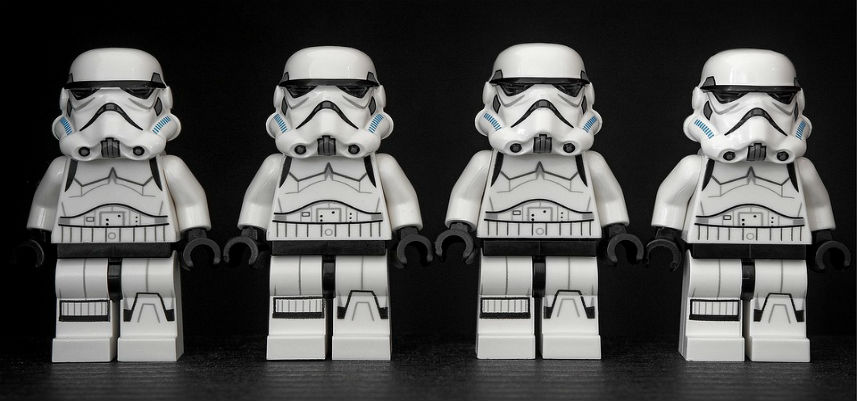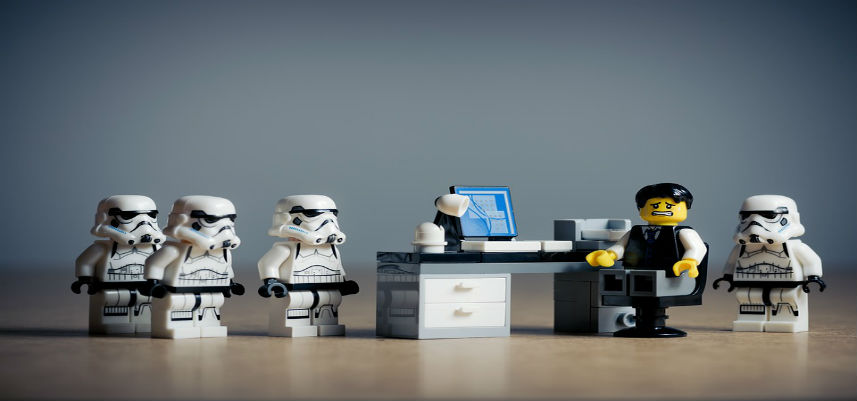Being a business owner, you probably must be aware that the growth of the business doesn’t merely depend upon acquiring new customers. In fact a business only enters the growth phase when it is capable of retaining its existing clients and then growing on that base.
According to a research carried out by Bain & Company, an increase in customer retention by merely 5% leads to an increase in profit anywhere between 30% to 95%. On the other hand, getting a new customer can cost from 5% to 25% more than retaining an existing client. Therefore, if you think that investing more in acquiring new customers would get you greater profits, then you are mistaken. It is absolutely essential for you to invest as much time and focus on your existing clients as in new ones, if not more.
This article will let you learn how to calculate customer retention through the power of math, while providing you with useful tips that will enable you to retain your customers and attract new ones.
Determining Your Customer Retention Rate

You can determine your customer retention rate by using the following formula:
- (Customers at closing period) – (New clients)/ (Customers at starting period) X 100
- Find out the time period for which you are measuring the rate i.e. quarter, year, month etc.
- Once you know the time period for which you calculating the rate, start by calculating the number of customers at the start of that particular period.
- Then calculate the number of customers at the end of the same period.
- Subtract new clients from the total number of customers at the close the period for which you are trying to calculate the retention rate for.
- Now divide the figure that you get from the above calculation by the number of customers present at the start of the same period.
- Then multiply the resultant figure with 100. This would give you your customer retention rate.
- For example, if your customers at the start of a year were 50 and you managed to get 20 new customers while losing out on 10, then by using the above formula your customer retention rate would be 80%.
Once you are aware of what you customer retention rate is, you should work towards figuring out reasons as to why you were not able to retain your customers. Try to find out similar causes by calculating customer retention rates during different periods. See if there is a similar pattern between these periods where you customers leave. This would give you an important insight into the functioning of your business and how you could improve the process to keep your customers with you for a long time.
Following are the different ways through which you can increase client retention.
Take Into Consideration Case Studies During Sales

Most businesses equate sales to figures. Though it is true that sales are mostly figures, in order to achieve those staggering numbers, there is a lot of thought that needs to be put in. That is why that it is integral for you to take into consideration case studies formulated on your sales processes. This means that you should carry out research on whether the product that you are selling to your customers is actually what they are looking for. You should analyze critically that the product that you are offering would be able to create a long-lasting relationship or would it cater to temporary needs only?
Once you have studied various aspects of your product, share the information with customers. Case studies of other customers who responded positively to your product will help the customers in making the big decision and will help them derive a positive conclusion about your business.
By giving your customers an option to consider their decision whether they want to stay or leave would automatically make them sway in your favor. This will also let your customers set realistic expectations from what you are offering to them, making them stick with you for a long time to come.
Define Your Limits From The Start

Your customers have a lot of expectations from you. So do you. It is equally important that while you understand what your customers are looking for from your product, you convey to them clearly that what you expect out of them. Let's say your buyers might be considering that your product would give them X benefit. And while you work to provide them with that very particular benefit, you expect them to be patient for say, a period of three months.
While working on providing an exceptional experience by focusing on the quality and other functions of your business, you should clearly communicate what your business is offering to your customers and what would it be giving away in the future. This way, you can meet your customers’ expectations while giving them a realistic view of what you are willing to offer them in future, which would in turn strengthen bonds.
Be Loud And Clear About Results

Customers will continue to keep buying from you as long as your product is catering for their needs and the ROI is encouraging. If a customer finds that his needs have been adequately met with optimum standards, there is no excuse for him to bid farewell and turn away.
For you to be clear about your results, you need to invest on a system that would gather, sort and analyze your performance and see how your product has helped your customers. The metrics that you share with your customers should be the ones that the customer deems them to be useful and you and the customers have worked together to set. While conveying the results, try to remain as transparent as possible and point out areas that need improvement. Work on the areas that lag behind and try to keep improving the metrics. This way your customer will not be able to find an excuse to say goodbye to your business.
Be Mindful Of Where You Want To Steer Your Relationship In Future

The relationship of customers with a particular product is like dating. They can keep “trying” it for some time, but then there would come a point where they would want to be clear on what the future holds for them.
The yearning to know what the business is going to provide the customer in their future, is in fact a realistic expectation.
Here customer-customer success manager (CSM) comes in. CSMs should work on formulating sound strategies that would focus on customer relationships in the future. Divide the ultimate goals into small steps so that both parties look forward to achieving them together, while still being satisfied with the existing phase of their relationship.
Share Moments Of Your Collective Success

There are multiple researches that show that the impact of negative events stays much longer than the sweetness of positive experiences. While there can be many instances of pleasures, a few negative incidents would definitely outlast, turning the whole experience sour.
CSMs need to work on ways that would enrich their customers’ experiences based on their positive interactions with the business. Almost all businesses work on a back-up plan in an event if something goes wrong. For instance, if certain goals are not met, shipping takes longer than expected or the quality of the product isn’t at par to the customers’ expectations, most businesses send apologies, provide support for overcoming the issue or make a replacement. But when customers are met with positive experiences, very few businesses tap on this opportunity and celebrate these profound moments. A strategy that would help the business focus on successful customer events, would make the customer feel truly understood and appreciated, making them stay with you for longer.
Get Regular Feedback And Work On The Suggestions

You cannot expect your customers to stick with you for long, if you are not sure what is causing them to be unhappy in the first place. Once you are aware of what causes your customer to be dissatisfied with what you are offering to him and other signs of unhappiness, you can work to improve the areas.
For this you need a regular feedback from your customers. But your customers would only take out time for feedback, if they see some real changes being implemented and their cause of concern being appropriately addressed.
You can email surveys, conduct an online poll or ask your customers to fill up a feedback form after making the transaction. Regardless of what method you adopt, you will get important insights as to why your customers are thinking of leaving you and moving to other alternative. This would also give you useful insights into customer trends, enabling you to specifically cater for your customers’ needs before they turn towards your competitors.
Look For Providing A Consistent Customer Experience

An important feature that customers look while purchasing your products is the consistency level. Same levels of service, product quality and pricing would help your customers build trust. Businesses that offer a consistent experience to their purchasers are deemed as trustworthy by them.
Without giving them a defined, consistent experience, your customers are to be met with unexpected surprises. And when your customers’ are looking to make a purchase, they want to be sure what they would be getting for the price they pay. The last thing they are looking for is a surprise.
Work on creating coherence on all aspects of your business. From your social media pages to your customer service department, ensure that you provide the customer with a streamlined, consistent experience. Also devise strategies for your future endeavors that would provide your customers with precisely the same level of comfort and feasibility that they get now. This would make your customers rely on your business, making it an indispensable part of their lives.
Keep Communication Records At Hand

There are a lot of factors that contribute towards customer retention including the company’s culture, business practices and quality of product. You can greatly cater to the problem of customer turnover by simply developing a CRM where you can put together all important notes from telephonic conversations, meetings and complaints.
With details about the customers’ complaints and their issues, you can proactively deal with their immediate concerns and provide them a customized experience. This would enable you to build a relationship on a personal level that would last for long.
Utilize The Law Of Reciprocity

There is an old saying, “if you do good, you get good.” While this wise counsel is true in many spheres of our lives, it also holds a lot of value when it comes to businesses.
When you deal nicely with your customer, they subconsciously feel obliged to return the favor. While reciprocity comes in two type; surprise and conscious, they are extremely useful for businesses to garner loyalty from their customers.
Surprise reciprocity is when a business gives its customer some favor without giving any prior indication of doing so. For instance if you give your customer a free product on his purchase without showing an intention to do so earlier is an classic example of surprise reciprocity.
Conscious reciprocity is when a business offers something extra to its customers in a manner that they are aware about it, is known as conscious reciprocity. This doesn’t mean that it is noted down in reports, rather the entitled customer is aware of what he is getting as a bonus. A good example is giving your customer an access to the latest boxing gloves collection that are not available in the market.
Have you tried any of these strategies? What is your tried and tested formula to keep your customers loyal to your business? Share your views with us here.


